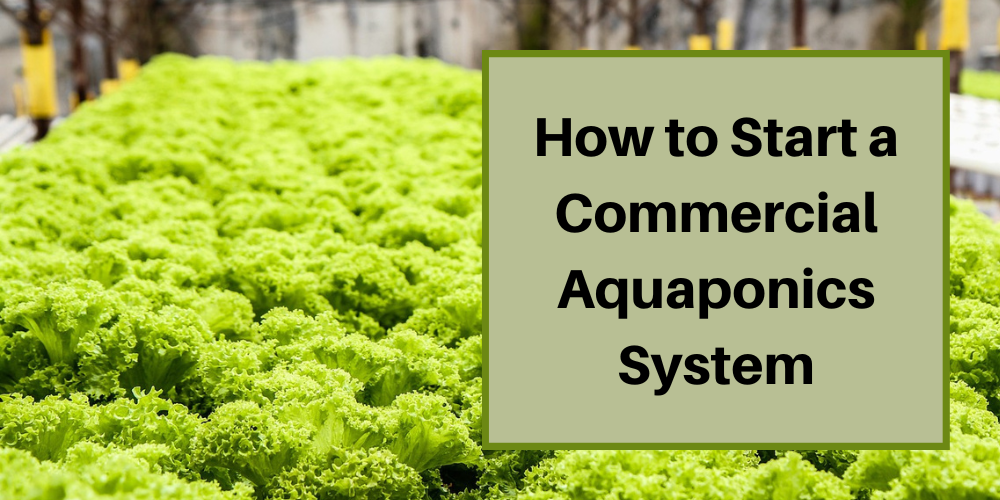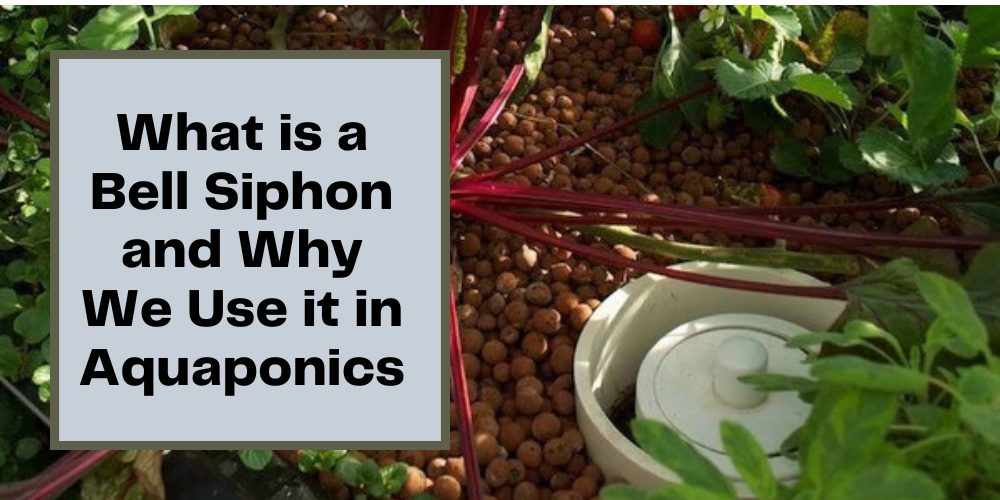The health of the fish plays a critical role in the overall functionality of an aquaponics system. When fish fall prey to diseases, it not only jeopardizes their well-being but also threatens the balance of the entire system. In this article, we will discuss the common fish diseases in aquaponics, identify the contributing factors that lead to these diseases, and offer practical tips to ensure the health of both aquatic and plant components.
A Brief Overview of Aquaponics Systems
In an aquaponics system, fish and plants coexist in a closed-loop environment, fostering a symbiotic relationship. The rich in nutrients fish waste serves as an organic fertilizer for plants while the plants purify the water, thus creating a harmonious ecosystem. This method eliminates the need for traditional soil and provides a more resource-efficient, space-saving alternative for growing crops.
Aquaponics systems come in various designs, from backyard setups to commercial-scale operations. The versatility of these systems allows for the cultivation of a wide range of fish species and plants, making them adaptable to different climates and environments.
The Importance of Preventing Fish Diseases in Aquaponics
As the system's central component, fish play a dual role—they contribute nutrients for plant growth and serve as a potential barometer for the ecosystem's overall health. The presence of fish diseases poses a significant threat, endangering aquatic life and compromising the delicate balance that sustains the entire system.
Preventing fish diseases is crucial for maintaining the functionality and productivity of the aquaponics system. Diseased fish can introduce pathogens that harm both the aquatic and plant components, leading to disruptions in nutrient cycling and water purification processes. Disease outbreaks can also result in financial losses for aquaponics practitioners, affecting the viability and sustainability of their operations.

Key Components of Aquaponics Systems
1. Fish Tanks:
- A container where fish live.
- Fish produce waste, including ammonia, which initiates the nutrient cycle.
2. Grow Beds:
- Containers or areas where plants are cultivated.
- Filled with a growing medium (such as gravel or expanded clay) to anchor plants and support bacterial growth.
3. Pumps and Plumbing:
- Responsible for circulating water between the fish tanks and grow beds.
- Ensures a continuous flow of nutrients from fish waste to plants and maintains proper oxygenation for fish.
4. Biological Filter:
- Hosts beneficial bacteria that convert ammonia to nitrites and then to nitrates.
- Integral for establishing and maintaining a healthy nutrient cycle.
5. Aeration System:
- Maintains adequate oxygen levels in the water for both fish and beneficial bacteria.
- Essential for preventing issues related to low oxygen ensuring the well-being of aquatic life.
6. pH Monitoring and Adjustment:
- Regularly check the acidity or alkalinity of the water.
- Ensures optimal conditions for the growth of plants and the well-being of fish.
Common Fish Diseases in Aquaponics
While aquaponics presents a unique and symbiotic environment, fish within these systems can still be susceptible to various diseases. Understanding the common ailments affecting aquatic life is pivotal for maintaining a healthy and thriving aquaponics system.
1. Fin Rot:
- Caused by bacteria, fungi, or parasites.
- Symptoms include frayed or disintegrating fins, inflammation, and behavioral changes.
2. Ichthyophthirius (Ich or White Spot Disease):
- A protozoan parasite.
- Manifests as white cysts on fish skin and gills, leading to irritation and increased mucus production.
3. Columnaris Disease:
- Bacterial infection.
- Recognized by white or grayish lesions on the skin, gills, or mouth, often resembling cotton wool.
4. Dropsy:
- Indicates internal organ failure.
- Symptoms include bloating, raised scales, lethargy, and difficulty swimming.
5. Gill Flukes:
- Parasitic infestation in the gills.
- Signs include labored breathing, increased mucus production, and inflammation of the gills.
6. Ulcers:
- Bacterial infections often cause open sores.
- External lesions and tissue damage characterize this condition.
Identification of Symptoms of Fish Diseases:
1. Changes in Behavior:
- Observe alterations in swimming patterns, feeding habits, and overall activity levels.
- Unusual lethargy or erratic behavior may indicate stress or disease.
2. Physical Abnormalities:
- Examine the fish for external signs of illness.
- Look for lesions, discoloration, unusual growths, or changes in fin structure.
3. Respiratory Distress:
- Labored breathing or gasping at the water's surface.
- Increased respiratory rate may signal gill infections or parasites.
4. Loss of Appetite:
- Monitor feeding behavior.
- A sudden loss of interest in food could signify underlying health problems.
5. Changes in Buoyancy:
- Abnormal floating, sinking, or swimming upside down.
- These behaviors may point to issues with the swim bladder or internal infections.

Factors Contributing to Fish Diseases
1. Water Quality Issues
a. Ammonia and Nitrate Levels:
- Elevated ammonia levels, a natural byproduct of fish waste, can be toxic.
- Nitrate levels produced during the nitrogen cycle can also become harmful in excess.
- Poor water quality compromises fish health, making them more susceptible to diseases.
b. pH Imbalance:
- Fluctuations in pH levels can stress fish and weaken their immune systems.
- Extreme acidity or alkalinity can directly contribute to the onset of diseases.
c. Temperature Fluctuations:
- Drastic changes in water temperature can stress fish and compromise their ability to resist infections.
- Certain diseases thrive in specific temperature ranges, making consistent control essential.
2. Poor System Design and Maintenance
a. Inadequate Filtration:
- Inefficient filtration allows the accumulation of uneaten food and fish waste, leading to poor water quality.
- Lack of mechanical and biological filtration can disrupt the balance of the aquaponics system.
b. Overcrowding:
- Excessive fish density in a confined space increases stress and competition.
- Overcrowded conditions facilitate the rapid spread of diseases.
c. Lack of Quarantine Procedures:
- Introducing new fish without proper quarantine increases the risk of introducing pathogens.
- Infected individuals can quickly spread diseases to the entire population.
d. Insufficient Aeration:
- Inadequate oxygenation can stress fish and weaken their immune systems.
- Proper aeration is crucial for the well-being of both fish and beneficial bacteria.
e. Neglecting Regular Checks:
- Failure to routinely monitor water parameters and system components.
- Neglecting maintenance tasks can lead to unforeseen issues that compromise the system's overall health.
3. Inadequate Fish Nutrition:
a. Imbalanced Diet:
- The lack of essential nutrients in fish feed weakens the immune system.
- Nutritional deficiencies make fish more susceptible to infections.
b. Overfeeding or Underfeeding:
- Overfeeding leads to excess uneaten food, contributing to poor water quality.
- Underfeeding deprives fish of the necessary nutrients, compromising their health.
Tips for Preventing Fish Diseases
1. Maintaining Optimal Water Conditions
a. pH Levels:
- Monitor and maintain stable pH levels within the recommended range (typically 6.5 to 7.5).
- Adjust pH gradually to avoid stressing fish with sudden changes.
- Consistent pH levels contribute to a stable and stress-free aquatic environment.
b. Ammonia and Nitrate Levels:
- Implement an effective biological filtration system to convert ammonia to nitrites and nitrates.
- Regularly test and maintain ammonia levels below 0.5 ppm and nitrate levels within acceptable limits.
- Adequate filtration removes harmful nitrogen compounds and supports a healthy nitrogen cycle.
c. Temperature Control:
- Keep water temperature within the optimal range for both fish and plants.
- Install heaters or shading mechanisms to mitigate temperature fluctuations.
- Different species have specific temperature preferences, so tailor the environment accordingly.
2. Proper System Design and Regular Maintenance
a. Filtration Systems:
- Install efficient mechanical and biological filtration systems to remove debris and convert harmful compounds.
- Choose appropriate filter media to promote the growth of beneficial bacteria.
- Regularly clean and maintain filters to ensure optimal functionality.
b. Monitoring Equipment:
- Invest in quality monitoring equipment, including thermometers, pH meters, and ammonia/nitrate test kits.
- Conduct routine checks to identify any deviations from optimal conditions.
- Swiftly address any issues detected through monitoring.
c. Regular System Checks:
- Establish a schedule for comprehensive system checks.
- Inspect for leaks, damaged components, and signs of wear.
- Regularly clean and inspect grow beds, ensuring proper plant root health and water distribution.
3. Providing Balanced Nutrition for Fish
a. Quality Fish Feed:
- Select high-quality fish feed with balanced nutrition.
- Ensure the feed meets the specific dietary requirements of the fish species in the system.
- Avoid overfeeding, as excess uneaten food can degrade water quality.
b. Feeding Schedules:
- Implement a consistent and regular feeding schedule.
- Monitor the feeding habits of fish to prevent overfeeding or underfeeding.
- Adjust feeding quantities based on the size and nutritional needs of the fish.
c. Monitoring Fish Behavior:
- Observe fish behavior regularly for signs of stress or illness.
- Look for changes in swimming patterns, interactions, and overall activity levels.
- Act promptly if any abnormal behavior or symptoms are observed, such as lethargy or changes in coloration.
Aquaponics practitioners can establish a proactive approach to disease prevention by adhering to these tips. Creating and maintaining optimal water conditions, ensuring proper system design and maintenance, and providing a well-balanced diet for fish collectively contribute to a robust and thriving aquaponics ecosystem. Regular attention to these aspects will not only prevent fish diseases but also promote the overall health and productivity of the entire system.
Fish Disease Prevention Measures
1. Quarantine Procedures for New Fish
a. Isolation Period:
- Establish a dedicated quarantine tank or area for newly acquired fish.
- Isolate new additions for a predetermined period, typically two to four weeks.
- This allows for observing potential diseases before introducing fish to the aquaponics system.
b. Health Assessment:
- Conduct a thorough health assessment of new fish during quarantine.
- Look for signs of diseases such as lesions, abnormal behavior, or external parasites.
- Treat any identified health issues before integrating fish into the central system.
c. Preventive Treatments:
- Consider preventive treatments during the quarantine period to prevent the introduction of pathogens.
- Use medications that are safe for both the fish and the aquaponics system.
- Monitor fish closely during treatment to ensure their well-being.
2. Limiting External Contamination
a. Restricted Access:
- Restrict access to the aquaponics system to authorized personnel only.
- Implement foot baths and hand-washing stations to reduce the risk of external contamination.
- Minimize the introduction of potential contaminants from clothing, tools, or outside sources.
b. Plant Quarantine:
- Apply biosecurity measures not only to fish but also to new plants or media introduced into the system.
- Inspect and quarantine new plants before placing them in grow beds to prevent the introduction of pests or diseases.
-
Ensure that any grow media used is free from contaminants.
3. Disease Surveillance and Early Detection
a. Regular Health Monitoring:
- Implement a routine health monitoring program for all fish in the system.
- Conduct visual inspections for signs of diseases, changes in behavior, or abnormalities.
- Monitor the overall condition of fish to identify potential issues early on.
b. Water Quality Monitoring:
- Regularly test and monitor water quality parameters.
- Changes in water quality, such as ammonia spikes or pH fluctuations, can indicate potential health issues.
- Address water quality issues promptly to prevent stress and disease.
c. Use of Surveillance Tools:
- Employ technological tools such as underwater cameras or sensors to monitor fish behavior and health remotely.
- Implement disease surveillance measures through regular screenings and tests.
- Collaborate with veterinary professionals for specialized diagnostics if needed.
Conclusion
In aquaponics, where fish and plants coexist in a delicate symbiosis, preventing fish diseases is a fundamental pillar for sustainable success. This article has discussed the intricacies of maintaining a thriving aquaponics system by understanding common fish diseases, identifying the contributing factors, and implementing proactive measures.
The health of fish directly influences the overall functionality and productivity of the aquaponics environment, and understanding fish diseases, their symptoms, and the factors that contribute to their occurrence lays the groundwork for effective prevention.






Leave a comment (all fields required)